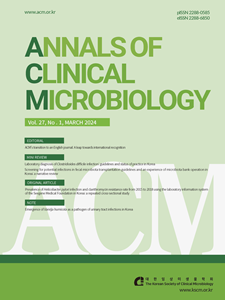Fig. 1. Correlation between bloodstream infection (BSI) by gram-positive cocci and average monthly temperature from 2008–2016 based on Pearson’s correlation coefficient. (a) Temperature (°C) vs. incidence rate of community-onset BSI by S. aureus (cases per 105 patient days), y = 0.00337x+1.774, r = 0.0565, P = 0.5612. (b) Temperature (°C) vs. incidence rate of hospital-acquired BSI by S. aureus (cases per 106 patient days), y = 0.0588x+29.781, r = 0.0444, P = 0.6484. (c) Temperature (°C) vs. incidence rate of community-onset BSI by Enterococcus spp. (cases per 105 patient days), y = 0.0488x+9.558, r = 0.0952, P = 0.3273. (d) Temperature (°C) vs. incidence rate of hospital-acquired BSI by Enterococcus spp. (cases per 106 patient days), y = -0.495x+59.061, r = -0.3020, P = 0.0015. CA, community-onset; HA, hospital-acquired; Temp., temperature.
Ann Clin Microbiol 2020;23:33-43. Season and Temperature Effects on Bloodstream Infection Incidence in a Korean Tertiary Referral Hospital Download image (a) Community-onset BSI by S. aureus (b) Hospital-acquired BSI by S. aureus (c) Community-onset BSI by Enterococcus spp. (d) Hospital-acquired BSI by Enterococcus spp.
Table 3. Incidence of hospital-acquired bloodstream infections according to acquisition site and seasonal changes
Ann Clin Microbiol 2020;23:33-43. Season and Temperature Effects on Bloodstream Infection Incidence in a Korean Tertiary Referral Hospital Download table Etiologic agents Hospital-acquired (cases per 106 patient days) P Warm months Cold months M 95% CI IQR M 95% CI IQR S. aureus 29.10 24.90-33.70 22.50-37.10 26.90 23.60-32.70 20.80-34.70 0.6467 Enterococcus spp. […]
Table 2. Incidence of community-onset bloodstream infections according to acquisition site and seasonal changes
Ann Clin Microbiol 2020;23:33-43. Season and Temperature Effects on Bloodstream Infection Incidence in a Korean Tertiary Referral Hospital Download table Etiologic agents Community-onset (cases per 105 patient days) P Warm months Cold months M 95% CI IQR M 95% CI IQR S. aureus 17.88 16.16-20.01 13.96-20.92 16.80 15.63-19.17 15.25-20.37 0.6769 Enterococcus spp. […]
Table 1. Etiologic agents of bloodstream infections according to acquisition site (2008–2016)
Ann Clin Microbiol 2020;23:33-43. Season and Temperature Effects on Bloodstream Infection Incidence in a Korean Tertiary Referral Hospital Download table Year S. aureus Enterococcus spp. E. coli K. pneumoniae Acinetobacter spp. P. aeruginosa Total CO HA CO/HA Total CO HA CO/HA Total CO HA CO/HA Total CO […]
Table 6. Sequencing based MTB complex differentiation for exact tandem repeat D
Ann Clin Microbiol 2020;23:21-31. Frequency of Mycobacterium tuberculosis Among M. tuberculosis Complex Strains Isolated from Clinical Specimen Download table Organisms Total No. of ETR-D MTB H37Rv 3 (3 x 77 bp) M. bovis AN5 4 (3 x 77 bp, 1 x 53 bp) M. bovis* 4 (3 x 77 bp, 1 x 53 bp) M. bovis […]
Table 5. Spoligotyping-based MTB complex differentiation
Ann Clin Microbiol 2020;23:21-31. Frequency of Mycobacterium tuberculosis Among M. tuberculosis Complex Strains Isolated from Clinical Specimen Download table Species/ Specimen No. Octal value SIT Clade (strain) Spoligotype pattern MTB H37Rv 777777477760771 451 T-H37Rv M. bovis AN5 676773777777600 482 BOV_1 M. bovis 664073777777600 683 BOV_2 M. bovis BCG 676773777777600 482 BOV_1 M. africanum 770777777777671 181 […]
Table 4. PCR-based MTB complex typing
Ann Clin Microbiol 2020;23:21-31. Frequency of Mycobacterium tuberculosis Among M. tuberculosis Complex Strains Isolated from Clinical Specimen Download table Organisms (No.) PCR-based MTB complex typing Rv0577 IS1561 Rv1510 (RD4) Rv1970 (RD7) Rv3877/8 (RD1) Rv3120 (RD12) Rv2073c (RD9) MTB H37Rv + + + + + + + M. bovis AN5 + + – – + – […]
Table 3. Characteristics of 310 Mycobacterium tuberculosis complex cases in clinical specimen
Ann Clin Microbiol 2020;23:21-31. Frequency of Mycobacterium tuberculosis Among M. tuberculosis Complex Strains Isolated from Clinical Specimen Download table Variables M. tuberculosis complex No. (%) Age, years 0-9 1 (0.3) 10-19 5 (1.6) 20-29 11 (3.6) 30-39 13 (4.2) 40-49 36 (11.6) 50-59 53 (17.1) 60-69 31 (10.0) ≥70 160 (51.6) Sex Male 182 […]
Table 2. Primers used in spoligotyping and exact tandem repeat D sequencing
Ann Clin Microbiol 2020;23:21-31. Frequency of Mycobacterium tuberculosis Among M. tuberculosis Complex Strains Isolated from Clinical Specimen Download table Primer type and target locus Primer name Nucleotide sequence (5′ → 3′) Size, base pair Spoligotyping DR DRa GGT TTT GGG TCT GAC GAC Variable DRb CCG AGA GGG GAC GGA AAC […]
Table 1. Primers used in PCR-based MTB complex typing
Ann Clin Microbiol 2020;23:21-31. Frequency of Mycobacterium tuberculosis Among M. tuberculosis Complex Strains Isolated from Clinical Specimen Download table Primer type and target locus Primer name Nucleotide sequence (5′ → 3′) Size, base pair Rv0577 Rv0577F ATG CCC AAG AGA AGC GAA TAC AGG CAA 786 Rv0577R CTA TTG CTG CGG TGC GGG CTT […]
